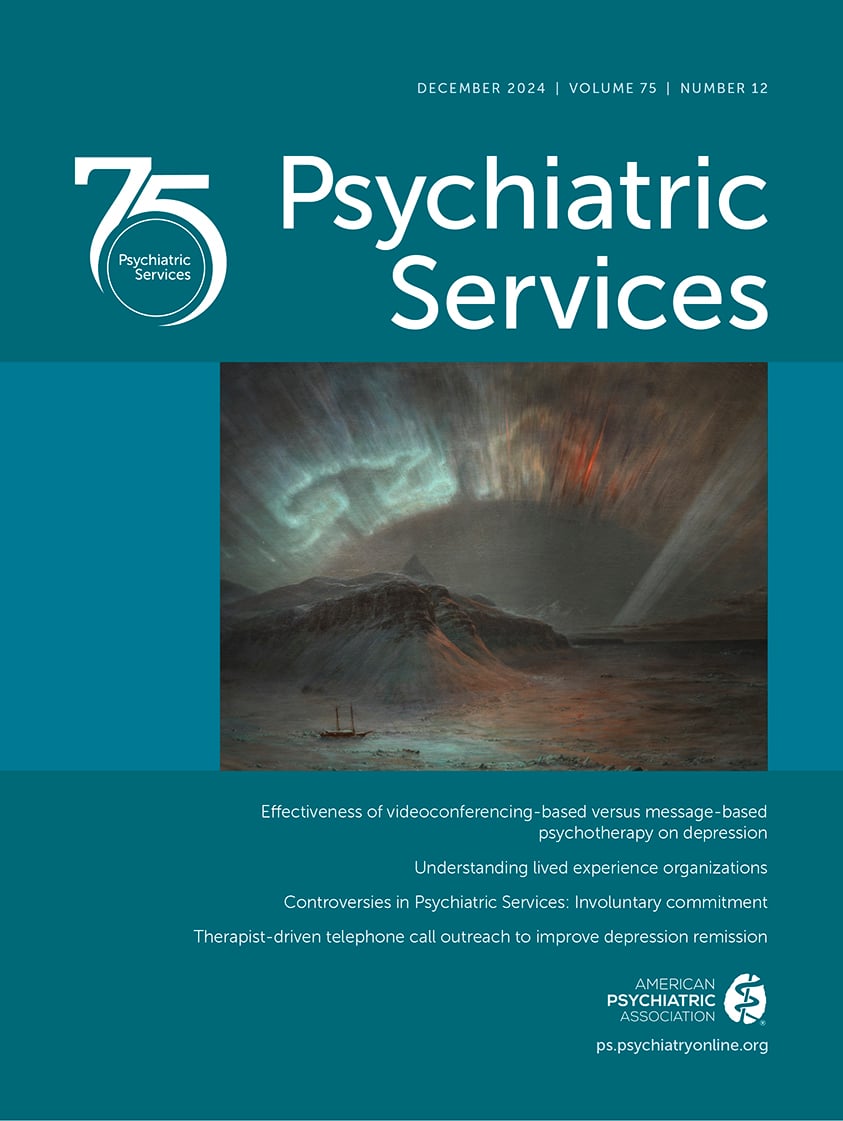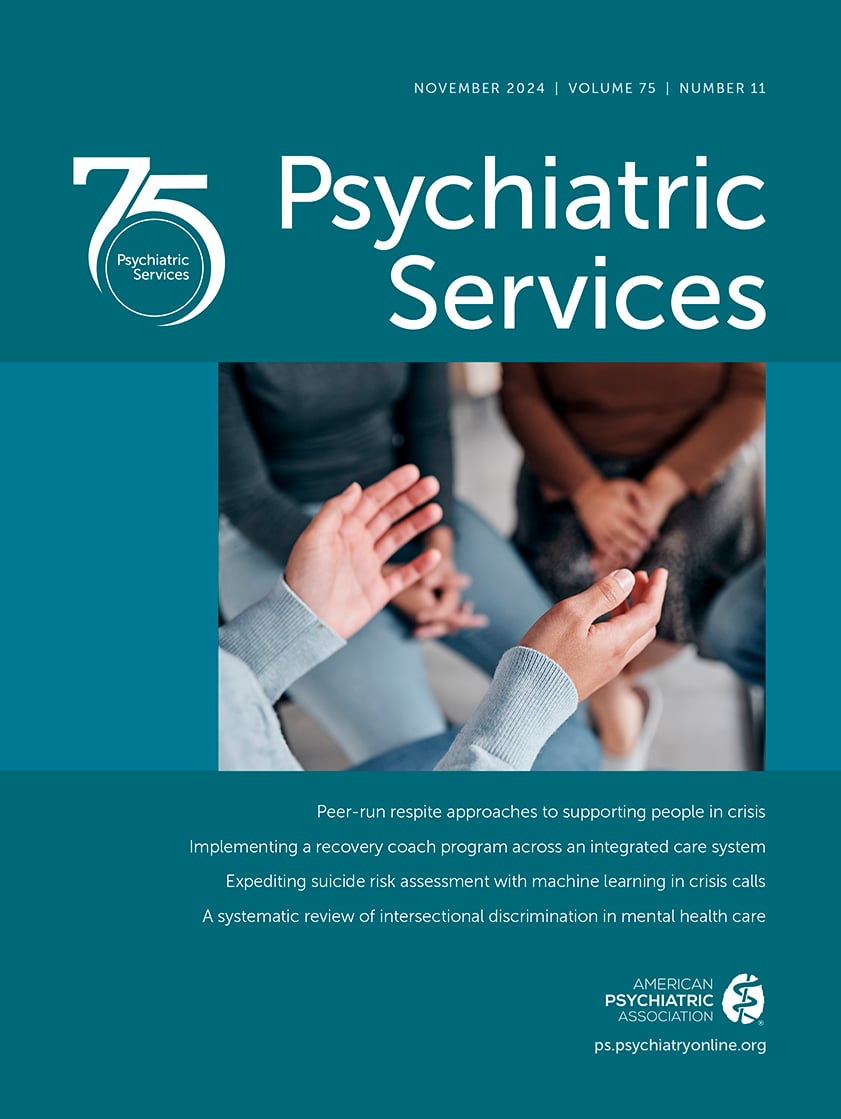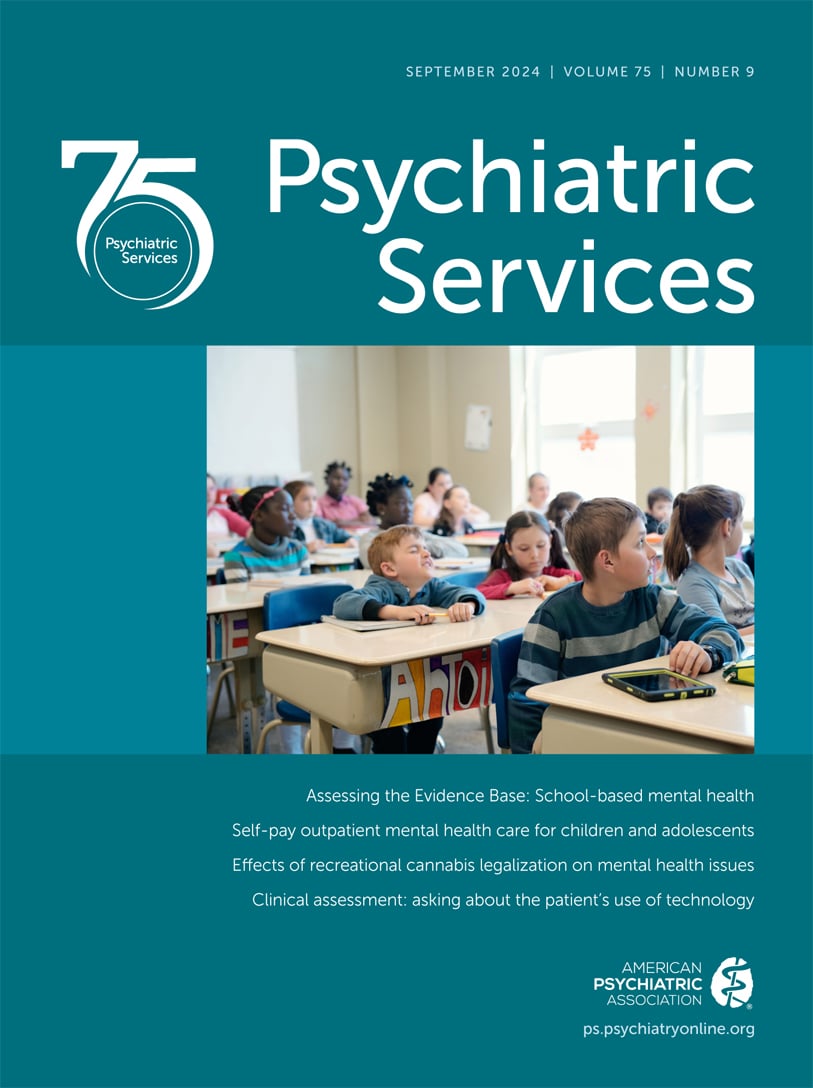Psychiatric Services
- Volume 53
- Number 11
- November 2002
Taking Issue
Departments
Columns
Special Section on Long-Term Care
Publication date: 01 November 2002
Pages1390–1396OBJECTIVE: The authors review the research literature on models and outcomes of extrinsic mental health services in nursing homes and summarize the data on current practices in this area. Extrinsic mental health services are those delivered in the nursing ...
https://doi.org/10.1176/appi.ps.53.11.1390Publication date: 01 November 2002
Pages1397–1404The authors describe domains of nonpharmacologic interventions for residents with dementia who are receiving long-term care. Special emphasis is placed on interventions involving the domains of inappropriate behavior, restraint reduction, and cognition. ...
https://doi.org/10.1176/appi.ps.53.11.1397Publication date: 01 November 2002
Pages1402–1406The Nursing Home Reform Act, part of the Omnibus Budget Reconciliation Act of 1987, stated that nursing homes should try nonpharmacologic interventions before resorting to pharmacologic agents when addressing problem behaviors among residents. Since that ...
https://doi.org/10.1176/appi.ps.53.11.1402Publication date: 01 November 2002
Pages1407–1413Psychiatric symptoms are common among individuals who live in nursing homes, with prevalence rates ranging from 51 percent to 94 percent. Accordingly, psychotropic medications are widely prescribed in this setting and are the subject of considerable ...
https://doi.org/10.1176/appi.ps.53.11.1407Publication date: 01 November 2002
Pages1414–1418During the past 15 years, federal regulations, survey and inspection programs, and payment policies have presented conflicting incentives and disincentives for the provision of mental health services in nursing homes in the United States. Policies and ...
https://doi.org/10.1176/appi.ps.53.11.1414Other Articles
Publication date: 01 November 2002
Pages1419–1431The past decade has seen dramatic growth in research on treatments for the psychiatric problems of older adults. An emerging evidence base supports the efficacy of geriatric mental health interventions. The authors provide an overview of the evidence base ...
https://doi.org/10.1176/appi.ps.53.11.1419Publication date: 01 November 2002
Pages1432–1437OBJECTIVE: The authors examined patients' perceptions of their case management care and the factors that influenced those perceptions. METHODS: A nine-item patients' perceptions questionnaire was administered to 225 patients with severe psychosis who were ...
https://doi.org/10.1176/appi.ps.53.11.1432Publication date: 01 November 2002
Pages1438–1443OBJECTIVES: This study tested the accuracy of models for predicting rehospitalization in a managed behavioral health organization and tested the effectiveness of different care management strategies for enhancing outpatient treatment follow-up. METHODS: ...
https://doi.org/10.1176/appi.ps.53.11.1438Publication date: 01 November 2002
Pages1444–1450OBJECTIVE: The purpose of this study was to identify patterns of new antidepressant use among children and adolescents and to determine whether the duration of treatment was sufficient. METHODS: A retrospective 12-month analysis was conducted of claims ...
https://doi.org/10.1176/appi.ps.53.11.1444Publication date: 01 November 2002
Pages1451–1455OBJECTIVE: This study examined the relationship between receipt of preadmission outpatient care during the month before an episode of hospitalization and the patients' subsequent treatment. METHODS: A total of 37,852 psychiatric inpatients who were ...
https://doi.org/10.1176/appi.ps.53.11.1451Publication date: 01 November 2002
Pages1456–1460OBJECTIVE: Few studies have examined medical comorbidity among middle-aged and older homeless people with schizophrenia. This study compared the number of physical health problems and receipt of physical health care services among older homeless people ...
https://doi.org/10.1176/appi.ps.53.11.1456Publication date: 01 November 2002
Pages1461–1466OBJECTIVES: Among the illicit stimulants, cocaine and amphetamines are the most widely abused. Although these drugs have similar psychoactive properties and routes of administration, their duration of action and mechanism of action are different, as are ...
https://doi.org/10.1176/appi.ps.53.11.1461Brief Report
Publication date: 01 November 2002
Pages1467–1468The authors present the results of two studies designed to improve treatment engagement among urban youths with conduct and oppositional behavioral difficulties. In the first study, information on attitudes about mental health treatment was obtained from ...
https://doi.org/10.1176/appi.ps.53.11.1467Publication date: 01 November 2002
Pages1469–1471The authors evaluated the effort of New Jersey jails to plan for the postrelease treatment needs of inmates with mental illness compared with inmates with heart disease and HIV infection or AIDS. Seventy percent of interviewees expressed a belief that ...
https://doi.org/10.1176/appi.ps.53.11.1469Publication date: 01 November 2002
Pages1472–1474The Pathways Into Homelessness project in Toronto interviewed 300 unaccompanied adult users of homeless shelters to identify characteristics of individuals who are homeless for the first time. The sample reflected the total population of homeless shelter ...
https://doi.org/10.1176/appi.ps.53.11.1472Letters
Book Reviews
News & Notes
Past Issues
View Issues Archive
Vol. 75 | No. 12

Vol. 75 | No. 11

Vol. 75 | No. 10
